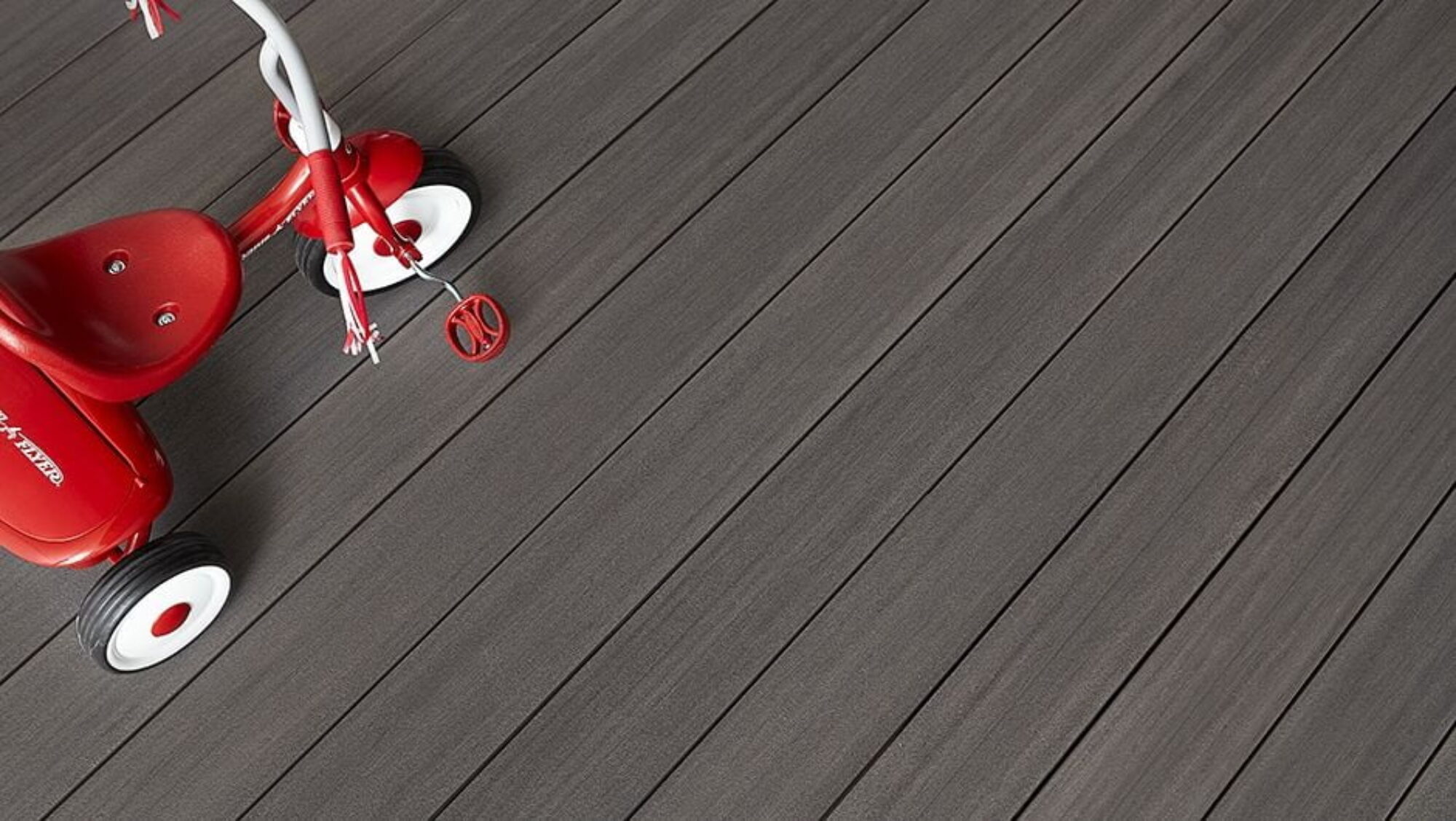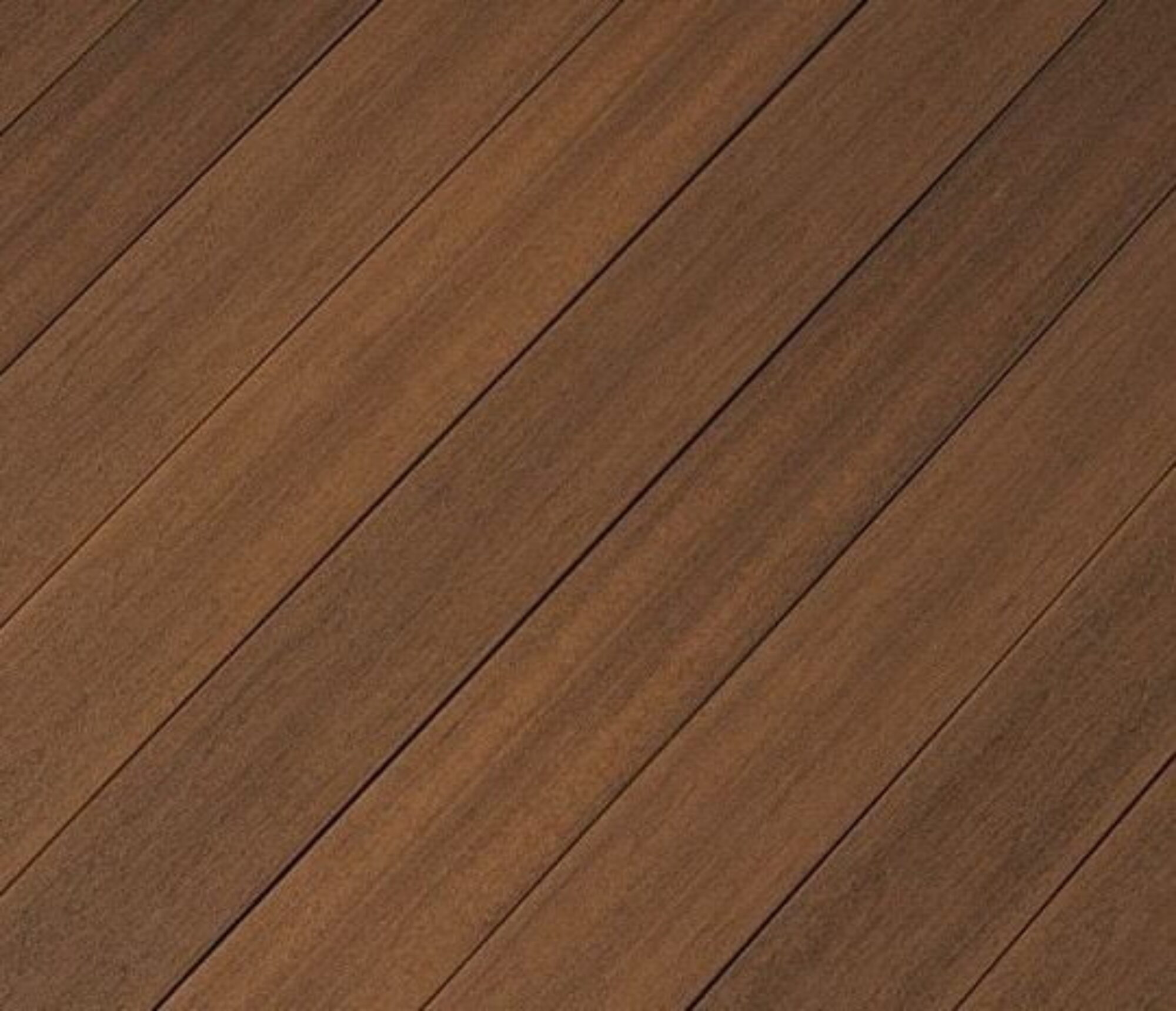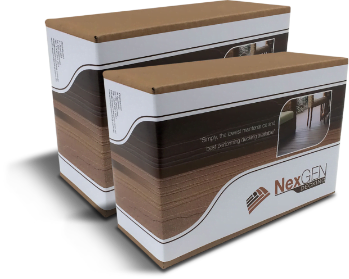Premium vs Low End
For many homeowners and business owners, investing in composites for decks and cladding simply makes sense. Unlike wood, premium composites don’t require the hours of maintenance — not to mention expense — involved in oiling, sealing, and sanding surfaces. High-quality composites won’t rot, fade, splinter, or stain. And, because composite decking is made from recycled materials, it’s a more environmentally-friendly option.
Read our deep dive explaining composite decking boards.
Composite decking differences can sometimes be hard to discern at a casual glance. Request samples now on the contact page!
The booming popularity of composites has ushered in an unfortunate side effect: low-end composites are currently flooding the market and causing serious issues for consumers. To prevent getting stuck with a low-quality product, it’s important to learn how to compare composite decking for quality. Let’s take a look at what sets premium composites apart from low-end composites — and how to tell the difference.
Related: Why the best composite decking boards in Australia keep getting better.

Premium vs. Low End Composites: Get Samples to Tell the Difference
When it comes to composite decking differences and comparing composite decking, a bit of research goes a long way. One of the best ways you can stay informed and avoid buying low-quality composite decking and cladding is to ask for samples. Once your samples have arrived, check for these signs of quality:
1. Check for Strength and Scratch-Resistance
Your decking probably gets a lot of foot traffic and puts up with daily wear-and-tear. Whether from friends and family going in and out of the house, pets running across the surface, or deck furniture being moved, you need to make sure that your composite is strong and scratch resistant.
When you get your samples, test for scratch-resistance by running a coin or other object along the surface of the composite. If a scratch remains, you’ll know you have an inferior product that won’t stand the test of time.
2. Pick at the Capping

Once you receive your sample, you’ll note that there are essentially two parts to your board: a core made of a wood-plastic composite covered with a layer of capping that is create
d separately and then fused to the core. In a high-quality sample of decking, this capping is extraordinarily strong, UV-resistant, and impenetrable to decay, insects, and rot.
When you pick at the capping, it should remain solidly adhered. If, on the other hand, you pick at the capping and pieces flake or strip off, then you’ll know you’re handling an inferior product that won’t stand up to the elements.
3. Do the Stain Test
Part of the appeal of high-end capped composite decking and cladding is that it won’t stain or fade. Especially in areas like decks that get a lot of foot traffic, see a lot of sun, and experience a lot of spills, this is a crucial selling point for composites.
You can easily put your sample’s stain-resistance to the test with a few simple experiments. First, choose some products that are likely to come into contact with your decking. Some examples include:
- Red wine
- Permanent marker
- Vegetable oil
- Barbecue sauce
- Coffee
Apply the stain-creating substance to your sample and let sit for a night or two. Then, use a paper towel to wipe off any remaining residue. If needed, use some soap and a brush to scrub any remaining residue before drying the sample.
After washing with soap and water, premium composite should show no sign of staining. On the other hand, low-quality composite will most likely retain some residue of permanent marker, red wine, or the other stain-producing substances you used.
4. Compare Concealed Fixing and Screw

Though obviously your main concern should be the look, feel, strength, and stain-resistance of the boards themselves, it’s also important to ensure you’re getting a product that comes with high-end hardware to support installation and stability. You can also order a sample of the concealed fixing and screw that comes with the product you’re researching, and see if its quality holds up to other samples.
Look for 316 Marine Grade Stainless Steel fixings and screws. Anything less may cause problems in years to come.
5. Observe the Board

Part of your sample test involves simply checking out the different elements of your board from all angles. For example, it’s a major red flag if the sample you picked out is hollow. The core should be solid and strong. In addition, you might want to consider if your sample is capped on all four sides. Composite that’s capped on all sides is more durable and offers versatility and value because it can be reversed.
At the end of the day, it’s your goal to find decking that not only holds up to time and the elements — but looks beautiful on your deck. With advancements in technology, premier composite companies have perfected the aesthetic of their products. In fact, premium composites are made to closely emulate the look of natural wood with wood grain patterns and diverse colour options that allows you to choose the look that best complements your home. Low-end composites, on the other hand, won’t fool anyone.

Further Research: Ask Questions to Compare Composite Decking
Samples can tell you a lot about a product, but it’s also important to do some further research. Composite decking is an investment that should last you years, so it’s worthwhile to compare composite decking through as many avenues as possible:
How Much Does it Cost?
It’s true: you get what you pay for. Because high-quality composite decking is created with exacting standards, it can often require an up-front cost similar to some wood decks. Of course, composite decking is more cost-effective in the long run since homeowners don’t have to worry about maintenance expenses like frequently oiling and sealing their decks.
If a price seems “too good to be true” on some composite decking, it’s fair to be suspicious of the product’s quality and integrity. On the other hand, even low-quality composite companies are currently pushing their prices up. So even if a product seems to be priced similarly to high-end composites, it’s worth doing some sample tests and further research into the product.
What do Other Customers Say?
Though even great companies will have one or two poor reviews, it’s important to get a sense of the overall quality of the product through other consumers’ reviews and testimonials.If you look up a product online and a significant portion of reviewers complain that the composite is chipped, stained, faded, or rotting away after a short time, then you should definitely be wary.
Where and How is the Product Manufactured?
By checking a company’s website or calling their customer service number, you should be able to gain some insight into manufacturing processes. Some questions you may want to research include:
- What is the country of origin? Products manufactured in the USA have a high standard of production and have to adhere to standards for quality and safety.
- What is the manufacturing process? Many people seek composite decking because of the environmental implications. Ensure that the product you’re considering is created using recycled materials and sustainable practices.
- What company manufactures the product? You deserve transparency when it comes to your purchases. Make sure you can trace the manufacturer of the composite boards.
Does it Come with a Great Warranty?
Companies that produce high-end, premium composites should stand behind their products with a warranty. For example, NexGEN’s premium composite products come with a 50 Year Stain & Fade Warranty and a Lifetime Performance Warranty, which demonstrates a commitment to excellence. If the composite product you’re purchasing doesn’t offer a warranty, its quality may be suspect.
NexGEN’s Composites Check all the Boxes
At NexGEN, our capped composite products check all the boxes. We offer stain, fade, rot, mold, and scratch-resistant cladding that will stand the test of time. Our products are all manufactured using the latest in sustainable technology in the United States of America.
We’re proud to offer a well-made, durable, and aesthetically-pleasing product that complements your home or business’s exterior. Want to learn more about what sets our premium decking apart from low-end decking? Please feel free to contact us today.
Products
Gallery
Contact
Direct Office Numbers
Adelaide – (08) 6316 0469
Brisbane – (07) 3041 6065
Melbourne – (03) 8672 6444
Sydney – (02) 8072 6220

